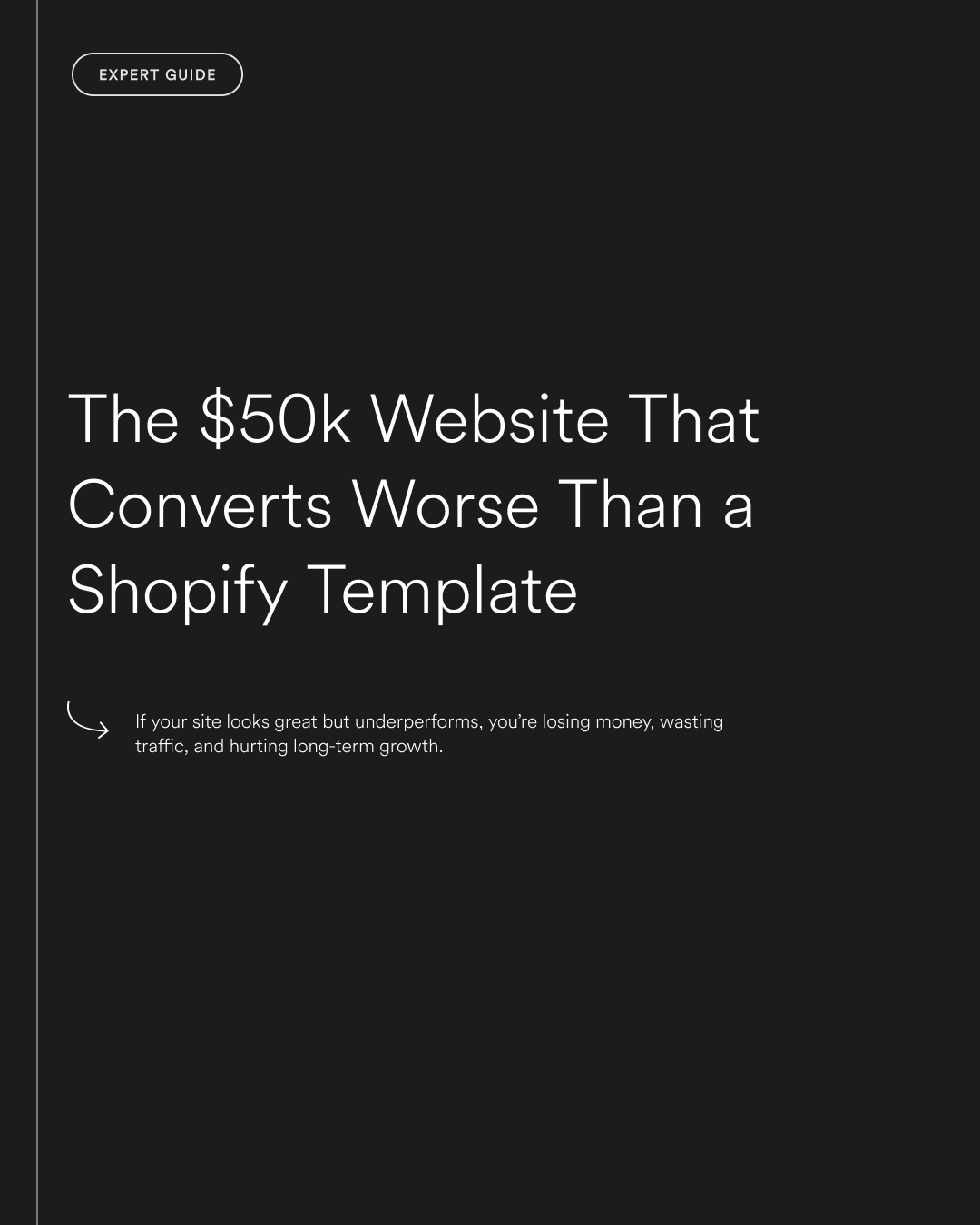It looks amazing. The animations are slick, the fonts are on trend, and the homepage scrolls like a dream. But there’s a problem.
It doesn’t convert.
No one clicks the button. Bounce rates are up. Customers are confused. And your team is stuck asking: how did we spend fifty grand on something that’s performing worse than our old Shopify template?
Why This Matters to Your Business
Websites don’t exist to win awards. They exist to drive business outcomes. If your site looks great but underperforms, you’re losing money, wasting traffic, and hurting long-term growth.
This article breaks down how expensive sites go wrong, and why simpler builds, when done right, often deliver better results.
Key Tip: The best websites make it easy for customers to act. Clean structure and clear messaging almost always beat flash.
Where Expensive Websites Go Wrong
1. Built for aesthetics, not outcomes
A high-end agency might deliver a beautiful site, but if it’s not designed with your customers and sales journey in mind, it won’t convert.
Common signs:
- Content that looks great but says nothing useful
- CTAs buried or confusing
- Design prioritised over function
What to do instead:
- Start with goals. What actions should users take?
- Design for decisions, not decoration.
2. Custom code over native tools
Some builds rely on heavy custom development where native platform tools would work better. The result? A fragile site that breaks easily and is hard to update.
Example:A Shopify brand spent tens of thousands on a custom product page that broke every time they added a new variant. They later rebuilt it using native features and it worked better.
What to do instead:
- Prioritise native functionality
- Customise only where there’s a clear business case
3. Bloated with features no one uses
Bespoke filter systems, fancy animations, scroll-triggered effects. Nice in theory, often ignored in practice.
Why it matters:
- Slower load times
- Higher maintenance
- Lower accessibility and UX clarity
Check this: Ask what features customers actually use. Strip back what’s not essential.
4. Poor content hierarchy
No matter how good the design is, if users don’t know what to read first, they won’t read at all.
Red flags:
- Walls of text
- No scannable structure
- Important messages buried halfway down the page
What works:
- Strong headings
- Short paragraphs
- Clear flow of information, especially on product and service pages
5. No ownership post-launch
A big-budget site often ends up locked behind a dev agency. Every small change becomes a support ticket. Your marketing team ends up handcuffed.
What to do instead:
- Choose platforms like Webflow or Shopify that empower internal teams
- Ensure the CMS is structured for real-world use
Why Simpler Sites Convert Better (When Built Well)
1. They focus on the essentials
A great site doesn’t need to be complex. It needs to:
- Load fast
- Explain clearly
- Guide users to act
Real-world example:A client moved from a fully custom Wordpress site to a clean Shopify build with standard sections. Their conversion rate increased by 34% in the first month.
2. They’re easier to manage and improve
Simplicity means fewer blockers. If your team can launch a landing page without a developer, you can move faster and optimise better.
3. They don’t distract from the message
Too much visual flair can overshadow what actually matters: value props, trust signals, and a clear user journey.
“Can’t We Just Tweak It?”
You can try. But if the foundation is wrong (overly custom, poorly structured, or designed without strategy) tweaks won’t solve the core issues.
Instead, ask:
- Is this site supporting or slowing down our growth?
- How much time are we spending fixing vs improving?
- Does our team feel confident using it?
Sometimes a lean rebuild does more than endless iteration.
What to Do Now: A Smarter Website Evaluation Checklist
- Audit your site goals: Is the site actually helping achieve them?
- Review your CMS: Can your team update key content easily?
- Test user flow: Can a new visitor understand your offer and act within 10 seconds?
- Check performance: Speed, mobile UX, and accessibility all impact conversion
- Get external feedback: Ask people outside your team to test and report what’s confusing
A fancy website isn’t always a functional one. And often, the simplest sites, when built with clarity and strategy, outperform expensive ones.
If your current site feels like it’s underdelivering, we can help you rethink it. Reach out if you’d like a second opinion.



